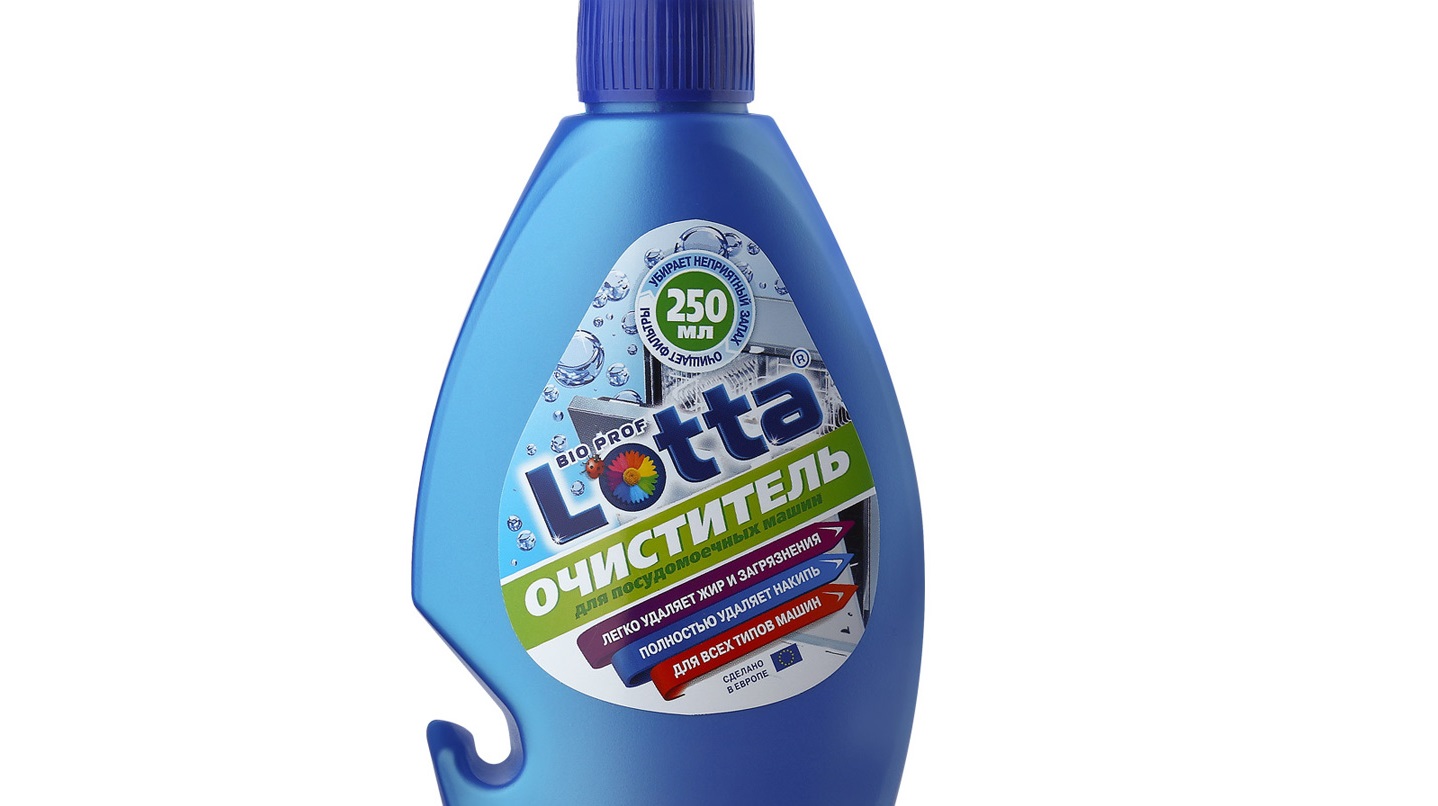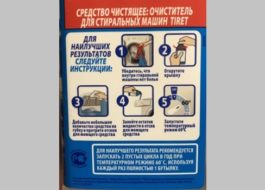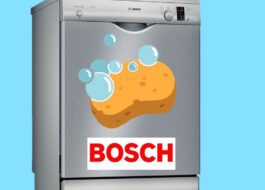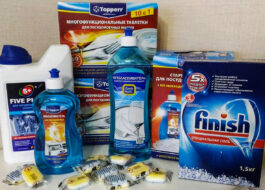Is it possible to put Tiret in the dishwasher?
 Cleaning household appliances is an integral part of caring for devices that make the life of a modern housewife much easier. The dishwasher, like any household helper, needs constant care in the form of cleaning the baskets, hopper and various filters. However, in case of serious internal blockages caused by the accumulation and compaction of sticky food residues or a prolonged absence of daily cleaning procedures, ordinary rinsing with water is not enough. Special pipe cleaners can eliminate such problems, but appliance repair specialists say that it is not worth pouring Tiret into the dishwasher. Is this really true?
Cleaning household appliances is an integral part of caring for devices that make the life of a modern housewife much easier. The dishwasher, like any household helper, needs constant care in the form of cleaning the baskets, hopper and various filters. However, in case of serious internal blockages caused by the accumulation and compaction of sticky food residues or a prolonged absence of daily cleaning procedures, ordinary rinsing with water is not enough. Special pipe cleaners can eliminate such problems, but appliance repair specialists say that it is not worth pouring Tiret into the dishwasher. Is this really true?
Is it permissible to use chemicals to clean the PMM?
Cleaning a dishwasher at home without the help of a professional is not difficult. It is enough to know how the equipment works and not to rush to use aggressive chemicals, since in many cases the usual mechanical removal of the blockage is sufficient. Cleaning should be done in stages.
If a blockage causes the machine to stop during operation, the first thing to do is disconnect it from the electrical network. Next, the drain hose is removed from the drain pipe and the water is allowed to drain naturally into some container. Now you can try to start the machine again, after selecting the “Drain” mode. If the equipment is working and water is draining, you should look for the cause of the blockage in the pipe. To eliminate it, a special chemical agent is suitable - the same Tiret or the long-known “Mole”, or a special steel cable. If the blockage is severe and requires mechanical cleaning using a metal wire, it is better to use the services of a professional plumber. 
If water does not flow out of the machine, it means that a blockage has formed in it. Now you need to find the place where it is located. The first thing to check is the internal filter at the bottom of the dishwasher hopper. After freeing the equipment from water and dishes, you should remove the lower basket (you can leave the upper one) and unscrew the cover of the filter element. We remove the remaining food and then rinse under strong water pressure.
The next step is to check the blades with which water is supplied to the machine. They are carefully unscrewed and taken out one by one. An ordinary toothpick and running tap water can help clean the holes.
A more serious task is cleaning the drain pump, whose blockage also often causes household appliances to stop working. However, it is also completely solvable on its own. Using the instructions, you need to find the location of the unit, carefully unscrew all the fasteners holding it, and pull the pump out of the machine. Cleansing is carried out with a thin long object - a simple pencil, a skewer, a sushi stick. Having eliminated the deposit, you should check the position of the rotating element responsible for the movement of the blades and install the pump in place.
The internal parts of the pump may contain small and sharp objects that can injure your fingers - glass shards, metal fragments, solid food debris, therefore cleaning with bare hands is strictly prohibited.
If these manipulations do not bring the desired result and the machine continues to work poorly, the reason probably lies in the formation of plaque inside the circulation pump. This may be scale formed as a result of the accumulation of lime, or biological residues of products. It will not be possible to eliminate them without the use of special chemicals.
Some housewives recommend using household chemicals designed to remove blockages in pipes: Mole, Tiret and others. However, you should refrain from using them, since aggressive components can damage fragile and delicate parts of household appliances, and this will cause complex and expensive repairs. To combat plaque, you should choose special dishwasher cleaning products. You should give preference to the following brands:
- Clean&Fresh;
- Lotta;
- Finish.
These cleaners are specially designed to remove plaque of biological and chemical origin and do not harm the parts of household appliances.
How to avoid deep blockages?
It is always easier to prevent a blockage than to eliminate it, and regular prevention helps with this. Simple steps to clean the components of the dishwasher will help you avoid blockages, subsequent breakdowns and costly repairs.
- Internal filter. It is washed every week: the part should be removed, any remaining food removed from it and rinsed under running water. If the deposit is thick enough, the filter can be placed in a vinegar solution or soaked in dishwasher cleaner.
- Sprinkler blades. They are unscrewed, taken out of the device and placed under the tap: this action will allow you to evaluate the permeability of the liquid through the holes.If they are clogged, they should be cleaned with thin objects: a toothpick, an awl, a wire. This must be done carefully so as not to damage the parts. Clogged blades are one of the main reasons for excessive water consumption and poor dishwashing performance.

- Spray element axis. Having cleaned the blades and installed them in their rightful place, you should spin them several times to check the quality of their movement. If it is difficult, the deposits that have formed should be removed from the axle.
- Drain hose and water supply hose. They are cleaned at least once every six months. To do this, unscrew the fasteners at the ends of the part, remove them and rinse them under running water. If the hose shows signs of wear: kinks, thinned walls, it is recommended to replace it to avoid rupture.
- Drain pump. It should be checked monthly to ensure that no solid particles have entered the drain that could cause blockages or breakage.
You should also remember about the daily rules for caring for dishwashing equipment, which will allow you to both extend its service life and protect you from unnecessary expenses on repairs and maintenance. It is not recommended to overload it with dishes - this increases water consumption and reduces the quality of washing. Before placing plates and pots into the unit, you need to remove food residues from them so that they do not accumulate in the internal parts and filters.
To ensure high-quality cleaning of the internal components of the unit, once a month it is recommended to run it “idle” (without dishes) in the “Economy” mode.
If preventive measures were not previously observed, and it is not possible to mechanically clean the components, you can clean them with vinegar. To do this, pour two glasses of acid into the washing liquid compartment and turn on the economical washing mode.In the middle of the cycle, press the “Pause” button and let the machine stand for 15-20 minutes. For heavy contamination, this time increases to 8-12 hours. During this time, acid and water will dissolve hardened clogs and plaque, and their remnants will be removed from the equipment as soon as washing continues.
Interesting:
Reader comments
- Share your opinion - leave a comment
Categories
Washing machine repair


For buyers

For users

Dishwasher

















Add a comment